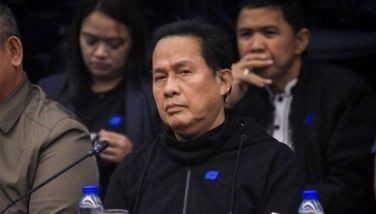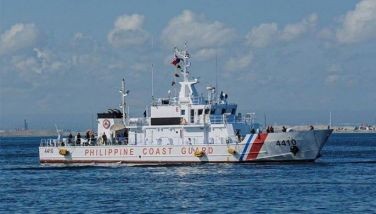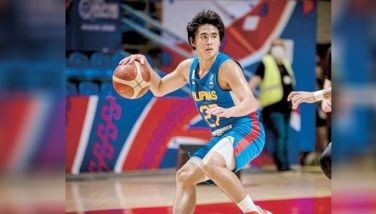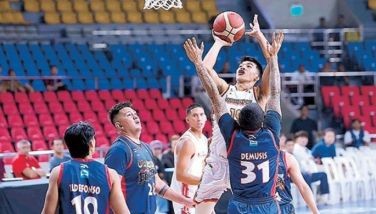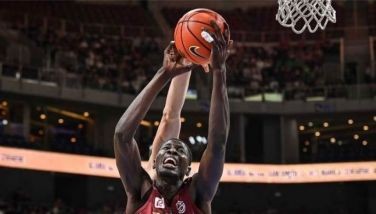Battle of Leyte Gulf in 1944 – the greatest naval battle in history
The Battle of Leyte Gulf in 1944 is considered the greatest naval battle in history, with the Allied naval forces led by Gen. Douglas MacArthur almost losing out to the Japanese imperial naval forces.
The Allied forces prevailed by a stroke of luck when the Japanese fleet entered the gulf at a time when the mighty US Third Fleet, the backbone of MacArthur’s beachhead, was about 350 miles away chasing a supposed decoy let loose by the enemy.
A miscalculation committed by the Japanese during the naval engagement turned the tide for the American fleets.
The Battle of Leyte Gulf involved 282 warships, compared with 250 at
Unlike in
The Americans lost one light carrier, two escort carriers, and three destroyers. They had sunk four carriers, three battleships, six heavy cruisers, three light cruisers, and eight destroyers.
War records showed that just two days before MacArthur made the historic beachhead on
A brilliant plan was hatched by Admiral Soedu Toyoda, who had under his command seven battleships, 13 heavy cruisers, and three light cruisers, then racing from
Kurita was instructed to divide the force in two, with the smaller detachment, under Vice Admiral Teiji Wishimura, entering
Both forces would then converge on MacArthur’s troop transports and Admiral Thomas Kinkaid’s warships composing the Seventh Fleet.
The Japanese also created a third flotilla of four overaged carriers and two battleships which were converted into carriers whose mission is to lure the American Task Force 34 away from
TF 34 was the Third Fleet’s backbone under Admiral William Halsey, which guarded
MacArthur, for his part, noted the confusing command structure of the liberating forces.
While Kinkaid was subordinate to him, MacArthur noted Halsey was answerable only to Admiral Chester Nimitz based in
The split command worried MacArthur, who had urged the Joint Chiefs to resolve the confusing command structure. Much to his dismay, MacArthur’s pleas were ignored.
Things turned out unexpectedly for both sides, forcing the Allies and the Japanese to alter their plans as the battle raged.
The Japanese, for instance, never expected their fleet would be spotted by US submarines on the night of
Its crew also warned Halsey and Kinkaid that “trouble was on its way.”
With the message, the Allied forces, including MacArthur’s Hashville, geared up for battle.
Raring to go
MacArthur himself wanted to go along, telling Kinkaid that all his life, he had “been reading and studying naval combat, and the glamor of sea battle” had excited his imagination. Kinkaid, however, turned him down.
According to MacArthur’s biographer William Manchester, “MacArthur submitted, but his interest in the coming engagement was more than whimsical. If such vessels as the Yamato and the Musashi broke through, their eighteen-inch guns could easily sink all American transports and bombard the beachhead into submission.”
In the initial engagement, American planes sank the leviathan Musashi, which the Japanese thought was “unsinkable” because of its armored decks.
Kurita was forced to turn his fleet away from
As pieced together by
The American admiral noted no enemy carriers had been sighted. Believing that there must be some in the vicinity, he sent up additional reconnaissance plants for a broader search.
At
As reported earlier, Ozawa’s flotilla was intended as a decoy to draw Halsey’s fast and powerful fleet from
On the night of Oct. 24, the southern unit of Kurita’s fleet commanded by Mishimuro entered the narrow waters of
As the Japanese vessels came through one by one, the force of US Navy Rear Admiral Josse Oldenderf “raked them viciously with broadsides from all his ships.”
“Mishimura drowned,” recorded
Later that night, US scouting planes spotted Kurita’s fleet retreating toward
“To his horror, Kinkaid learned that Kurita was almost on top of his fleet and that the Japanese naval force was intact except for the sunken Musashi.
“Kurita had passed through
Thus began Kinkaid’s frantic radio messages to Halsey, but received no response.
Half an hour later, Kinkaid repeated the call for help. But by that time, Halsey’s TF 34 was 350 miles away and was beginning to pummel Ozawa as the American prospects in
“At this point,” noted
The American destroyers nevertheless put up a gallant stand, counterattacking Kurita’s battleships.
“Kurita’s Goliaths milled around in confusion,”
This was the critical moment.
It was
Back in
That did it,
Halsey, breaking off action from the Japanese decoy flotilla, immediately sent six fast battleships and a carrier force back to
But for straying far from
The Japanese were able to intercept messages revealing plans for US carrier planes to land on
Kurita, however, believed the plan was preliminary to swarming attacks on his ships by land-based
He intercepted and misread two of Kinkaid’s messages to Halsey. Believing that Halsey was approaching rapidly and that he would soon bolt the door of San Bernardino Strait, Kurita turned back before 10 pm – unaware that Halsey’s leading ships would not reach it for three more hours.
Thus ended the Battle of Leyte Gulf.
- Latest
- Trending
















